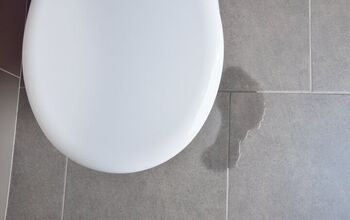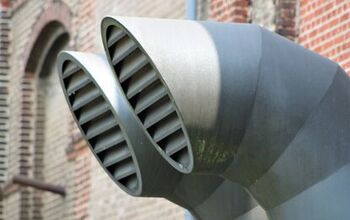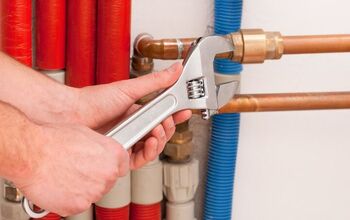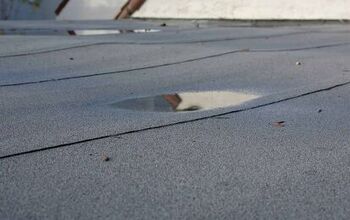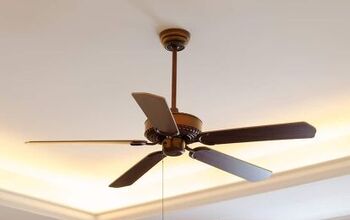RV Toilet Leaking On Floor? (Possible Causes & Fixes)

Owning an RV is a great way to see the states and also live in nature long-term. It’s why they’re starting to become fashionable again. However, most newbie RV owners don’t realize how quickly things head south. For example, many RVs start having problems with their toilets leaking on the floor. If you’re like most new owners, you’re probably wondering what you can even do with that kind of problem.
While there are other reasons why this could happen, the most common reason for an RV’s toilet leaking on the floor is the need for a new flange or a bad connection to the pipes behind the toilet. In extreme cases, floor floods can also be a sign that you need to replace a toilet.
RV toilets are finicky things indeed. That’s why it’s so vital to know how to react when you notice a leak happen. Thankfully, this guide will show you that it’s really not as bad as it looks…usually.
Do You Need to Install or Repair a Toilet?
Get free, zero-commitment quotes from pro contractors near you.

Why Is My RV Toilet Leaking On to The Floor?
Believe it or not, floor leaks are actually the most common type of leak to happen to an RV toilet. Almost without fail, a floor leak means that you have something that has knocked loose the watertight seals that make your RV’s water system leak-free. Thankfully, most RV toilet leaks are easy to diagnose. Here’s how…
1. The Back Of The Toilet
The first thing you want to do is ascertain that your leak is actually on the floor, rather than the back of the toilet. A typical RV toilet will have metal pipes that connect the water from the reserve to the toilet. To find out whether the leak is coming from here, touch the pipes and see if you feel moisture dripping down.
If you notice moisture dripping down the pipes, you can either replace the pipe parts that make up the plumbing (highly suggested) or use waterproofing caulk to create a seal around the leak.
2. Faulty Water Valve
The water valves in RV toilets are known for cracking and leaking, particularly if your camper frequently gets hit by freezes. In most cases, you’ll know that the water valve is the cause when you have water spraying out somewhere near where the water line attaches to the toilet.
To correct a faulty water valve, purchase a water valve kit that is designed for your specific model of RV toilet. Then, simply follow the instructions in the kit to replace your toilet’s water valve.
3. Bad Internal Seals
Among other components, RV toilets have seals inside of them that seal off the toilet bowl to the other pieces of the toilet. If any of these seals go bad, you will have water leaking on to the floor. Though, in this situation, you’ll have water leaking even when you’re not flushing the toilet. So, if you have water leaking from your RV toilet even when you’re not flushing, this may be caused by bad internal seals.
The solution to this problem is to either purchase a completely new RV toilet or call in a professional to disassemble your toilet and replace the seals. We don’t advise DIYing this particular issue, as you could create more problems if you don’t know what you’re doing.
4. Cracked Toilet Bowl
Although relatively rare, there may be a crack in the toilet bowl that is causing water to drip down onto the floor. To diagnose this problem, simply look all around the bowl of your toilet using a flashlight to check for any signs of cracks or leaks. You could also try wrapping the base of your toilet bowl with an oil toilet overnight. If you wake up in the morning with a wet spot on the towel, this can help you track down the location of the crack.
To fix a cracked toilet bowl, you can try using sealant to fill the crack. Though, in most cases, the best course of action is to replace your RV toilet with a new one. You never know how many more cracks could form or if your seal is good enough to stop the leak completely.
5. The Toilet Flange
On every toilet, there is going to be a ring around the floor that helps seal in water and prevent leaks. This is called the flange, a rubbery “circle” that’s at the base of the toilet. With all the cruising and bumps that can happen in RV travel, it shouldn’t be surprising that the flange can come unglued.
To figure out if this is the reason for your floor leak, take a look at the bottom of your toilet. Do you see any holes in the flange? Did it become unglued? If you flush the toilet, do you see water coming up from the bottom? Should you see any of those symptoms, you will need to remove the flange and replace it.
How To Replace The Toilet Flange
This can be the type of project that you will be able to do on your own, at least if you are new to RV repair or plumbing. If you’re handy with tools or have decent strength, it might work out. Here’s what you will need to do.
- Shut off the water. You can refer to your RV owner’s manual to find out how to do this,
- Go to your local hardware store and grab a flange that matches your toilet. You can usually find out which flange works by measuring your toilet.
- Using a pry knife, remove the caps on the bottom of your toilet. Then, use the wrench to remove the bolts holding the toilet down. Lift the toilet up.
- Place a garbage bag on the floor, and pull the toilet up onto the garbage bag. That’ll keep your floor clean.
- Pry off the old flange. Discard it.
- Give your toilet area a good scrub down. This can help your toilet’s flange get a better suction seal. Besides, it’s only sanitary. If your toilet is looking gnarly, then you need to clean that too.
- Place the new flange where the old flange was. You can usually just slide it right on top of the flange bolts. Make sure that it’s evenly stretched and that it has suctioned onto the floor.
- Put the toilet back on, over the new flange. Use the wrench to tighten the bolts on top, then place the caps back on. Make sure the toilet, drain, and flange are lined up.
- Turn your water back on. This is a must, obviously.
- Clean up the surrounding areas. Sometimes toilets drip around the area. If that’s the case, you might want to wipe down the area with some bathroom cleaner. After that, you can enjoy your toilet.
Should You Call A Professional?
Honestly, you could probably DIY this as long as you have some experience with plumbing and are willing to do some heavy lifting. With that said, you will probably need a second person to help you lift up the toilet. It’s a lot heavier than it looks! While DIY is an option, it may make more sense to call a plumber, especially if you’re in warranty.
If replacing the flange or toilet doesn’t fix the issue, you might need to call a plumber since there could be something else causing the issue that is a little more advanced.
When Should You Replace Your RV Toilet?
Though rare, there are certain signs that your RV toilet is past its prime and needs to be replaced. If you notice any of these warning signs, then you should consider asking for a toilet replacement.
- The toilet no longer seems to flush properly. Does it suction, only to have everything spit back up again? If so, it could be a bad flush mechanism. This is a classic sign that your toilet is no longer what it used to be.
- You constantly have trouble with clogs or leaks. If it’s a constant issue and you’re regularly shelling out money for repairs, a replacement and a call to the plumber is a must. Should this be the second or third time in a month that you’ve had to repair your toilet, it may be time to get a new one.
- Water keeps running into the bowl, even when you have finished flushing for a while. A constantly running toilet is a surefire sign of a toilet’s flush mechanism dying out. When that happens, most other parts of the toilet are going to die out too.
- A recent bump caused a crack in your toilet. It shouldn’t be surprising that a crack can lead to floor leaks. Should you see cracks or chips, you will need to replace your toilet in order to stop the leaks from happening.
How Much Does RV Toilet Replacement Cost?
Toilet replacement is a fairly simple procedure as far as RV repairs go. An RV toilet costs $100 to $150, while a toilet flange will cost only $20 and is often included with a replacement toilet for free. When you add $50 to $70 per hour for labor costs, you can expect the total cost to be between $150 to $220 or so.
The replacement you get can cost a little higher if there has been serious damage to the structure in and around the toilet. However, serious damage is highly unlikely in an RV unless you let the flood fester. If you do that, then you probably should try to see if your RV insurance will (somehow) be willing to cover some of the water and mold damage that your habits caused.
Do You Need to Install or Repair a Toilet?
Get free, zero-commitment quotes from pro contractors near you.

Related Questions
Why does my camper smell like poop?
If you have an RV or camper that has a bathroom in it, then the waste that you “made” is stored in a tank beneath the camper. The longer it is stored, the more the waste breaks down. Some of that waste involves high levels of anaerobic bacteria, many species of which are known for smelling pretty terribly.If you recently cleaned out your tank and the smell persists, there’s a chance that you may have a leak in your plumbing system. It’s best to check your surroundings to see if something fell out of your pipes.
Can you use standard toilet paper in an RV toilet?
It really depends on the RV model as well as the issues with your toilet. Most of the time, it’s best to err on the side of caution and try to find toilet paper that is specifically made for RVs and boats. This is because RV toilets are more prone to clogging than a typical toilet does.Toilet paper can be surprisingly bulky, and even capable of clogging your RV’s system. Using the right type of toilet paper is a smart way to prevent clogs from happening and keep your RV in tip-top shape.

Ossiana Tepfenhart is an expert writer, focusing on interior design and general home tips. Writing is her life, and it's what she does best. Her interests include art and real estate investments.
More by Ossiana Tepfenhart










